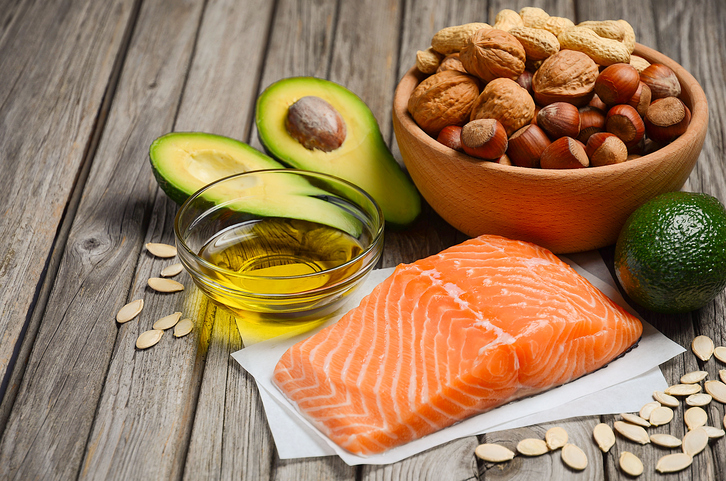What is the Ketogenic Diet? A Beginner’s Guide (see photos)

With so many different types of diets available, it’s difficult to keep track of what each one does, how it may (or may not) be beneficial to your health, fitness, and weight-loss efforts, and what it takes to follow the diet. That is certainly the case with the ketogenic diet. With so much confusion and misinformation, let’s get clear on the ketogenic diet plan, what it is, and the science surrounding it.
What is the Ketogenic Diet?
The ketogenic diet is a very-low-carbohydrate, high-fat, moderate-protein dietary approach. It’s more commonly referred to as a very-low-carbohydrate ketogenic diet (VLCKD). Or “keto” for short.
Dr. Russell Wilder was credited as the creator of the diet back in 1924 when he designed it as a treatment for epilepsy. It is still successfully used for that purpose today. In fact, in some cases, the keto diet can remove the need for medication.
Case in point, 11-month-old Charlie Abrahams had difficult-to-control epilepsy (despite using multiple medications). As a last resort, his parents turned to the ketogenic diet. It worked. Charlie became seizure- and drug-free within a month, and he hasn’t had a seizure since. In 1994, his parents founded the Charlie Foundation, recognized as a global leader in promoting ketogenic therapies for people with epilepsy, neurological disorders, select cancers, and various other health conditions.
Beginning in the 1960s and ’70s, the ketogenic diet became a popular tool for weight loss, particularly as the (induction phase of the) Atkins Diet. While the crux of this article will focus on the effectiveness of the ketogenic diet in weight management, it’s worth noting the therapeutic potential of the ketogenic diet for:1
- Cancer
- Autism
- ALS
- Parkinson’s
- Alzheimer’s
- Traumatic Brain Injury
- Type 2 Diabetes (T2D)
- Metabolic Syndrome
- Polycystic Ovary Syndrome
- Acne
Why Is It Called the “Ketogenic” Diet?
The name “ketogenic” stems from the diet’s ability to upregulate ketogenesis, the process by which the body creates ketones. During prolonged periods of fasting or several days of severe carbohydrate restriction (< 20 – 30 grams per day), the body’s supply of glucose (blood sugar) becomes depleted.
Because the central nervous system (i.e., brain) normally uses glucose and cannot use fat for fuel, the body is “forced” to find an alternative energy source. As a result, the liver ramps up the process of ketogenesis and the production of ketone bodies (from fats), which serve as an important energy source for the brain and other tissues (e.g., muscles).
Not only are ketones a critical energy source, they are the most energy efficient, yielding more usable energy than glucose or fat. Simply put, the ketogenic diet shifts the body’s metabolism away from using glucose (carbohydrates) toward a heavy reliance on fat.
Given the very nature of the ketogenic diet (i.e., severe carbohydrate restriction and near elimination of reliance on glucose), it should come as no surprise it is a highly effective dietary strategy for folks with insulin resistance and carbohydrate intolerance. For instance, in studies that have evaluated well-formulated VLCKD and documented high rates of compliance in individuals with T2D, “results have been nothing short of remarkable.” This includes dramatic improvements in glycemic control, HbA1c, insulin sensitivity, lipid markers (cholesterol, LDL, HDL, and triglycerides), and body weight.1–3
Is It Effective for Weight Loss?
While there is indeed debate as to what’s the “best” diet, the evidence is strong that the ketogenic diet plan is effective for weight management. In a randomized, controlled trial published in the journal Endocrine, researchers from Spain found obese participants following a VLCKD for just two months lost nearly 30 pounds. During the same time, participants following a standard low-calorie diet lost just 10 ½ pounds. After 12 months, 88% of the folks in the VLCKD group had lost more than 10% of their initial starting weight and nearly 3 times more weight than the low-calorie group.4
Perhaps most telling are the results from two systematic reviews with meta-analysis (arguably the most critical assessment of research on a particular topic). In one published in the British Journal of Nutrition, Brazilian researchers concluded, “Individuals assigned to a VLCKD achieved greater weight loss than those assigned to a [conventional low-fat diet] in the long-term. Hence, a VLCKD may be an alternative tool against obesity.”5
Supercharge Your Weight Loss:
In another published in The Lancet, researchers looked at trials examining the effects of different diets on weight-loss outcomes. The authors concluded, “In weight-loss trials, higher-fat weight-loss interventions led to significantly greater weight loss than low-fat interventions.”6
How Does It Work?
There is no doubt there is strong evidence that keto diets are effective for weight loss. However, there are contrasting theories regarding how they work. For instance, some have proposed that a ketogenic diet plan offer a “metabolic advantage.”
That is, the “carbohydrate-insulin model of obesity” states that diets high in carbs are particularly fattening because they raise insulin, which increases fat storage and decreases fat burning. So, the VLCKD, which severely restricts carbohydrate and therefore lowers insulin levels, is thought to work by increasing calorie expenditure and fat burning and reducing fat storage.
In essence, this view refutes the notion that a “calorie is a calorie.” However, a series of recent very well-controlled studies have provided evidence contrary to the “metabolic advantage” theory, failing to validate the carbohydrate-insulin model.7–9
A research team led by Dr. Antonio Paoli, from the University of Padova in Italy, suggests a “simpler, perhaps more likely, explanation for improved weight loss is a possible appetite-suppressant action of ketosis.”1 The ketogenic diet has been shown to have favorable effects on appetite by reducing levels of the “hunger hormone” ghrelin and increasing levels of appetite-regulating hormones, such as CCK.10
For instance, ketogenic diets typically provide moderate amounts of protein, which is well-known for its effects on satiety (feelings of fullness and satisfaction). What’s more, ketones may directly suppress appetite.
Speaking of protein, it’s very important to point out that a true keto diet provides only moderate amounts of protein. It’s NOT a high-protein diet. In fact, consuming too much protein may impair ketogenesis. Whether it’s through the process of converting excess protein to carbs (gluconeogenesis) or simply burning it for energy (prioritizing amino acids over fats), extra protein can reduce the body’s need to produce ketones.
What Does the Ketogenic Diet Plan Look Like?
Traditionally, ketogenic diet plans:
- Are very high in fat (~75 – 80% of calories)
- Are very low in carbohydrate (~5% of calories or ≤ 30 grams per day)
- Provide adequate protein (~ 15 – 20% of calories)
VLCKD are distinct from other diets that restrict carbohydrates, which are unlikely to be ketogenic and are typically defined as:11
- “Low-carbohydrate” diets that contain less than 130 grams of carbs per day or 26% of the energy from a 2,000-calorie diet.
- “Moderate-carbohydrate” diets provide between 26 and 45% of calories from carbohydrate.
What does the ketogenic diet look like on a traditional 2,000-calorie diet?
- 165 grams of fat (75% of calories)
- <30 grams of carbohydrate (5% of calories)
- 100 grams of protein (20% of calories)
Photo: What is the Ketogenic Diet

What Types of Foods Can You Eat on a Ketogenic Diet Plan?
A very small amount of very-low-carbohydrate foods, mainly non-starchy vegetables:
- Green leafy veggies
- Cruciferous veggies (broccoli, cauliflower, Brussels sprouts, cabbage)
- Asparagus
- Cucumbers
- Celery
- Mushrooms
- Zucchini
- *Once adapted, a small amount of low-sugar fruit (e.g., berries) can be added
An adequate amount of protein-rich foods, including:
- Meat
- Poultry
- Fish
- Seafood
- Eggs
A liberal amount of high-fat foods, including:
- Avocados
- Egg yolks
- Fatty fish
- Coconut, coconut oil, coconut milk
- MCT oil
- Olives and olive oil
- Nuts, nut butters, and seeds
- Bacon
- Butter and ghee
- Cheese
- Heavy cream
Photo: The Ketogenic Diet Plan

It is also incredibly important to properly hydrate by drinking plenty of clean water along with adequate consumption of sodium, potassium, and magnesium. In addition, the following drinks are typically permitted:
- Unsweetened tea
- Unsweetened coffee
- Zero-calorie soda and sparkling water
What’s the Next Step?
Okay, if your interest is piqued and you’re now considering a ketogenic diet, that’s great! Now that you have some of the basics down, it’s time to take some next steps. There are fantastic resources available, including recipes, articles, communities, and even keto calculators. Please post your questions or comments below, and we’ll be happy to help you get started.
Supercharge Your Diet Results with IC-5
IC-5, which is scientifically-designed to promote insulin sensitivity and improved carb tolerance, is one of our top diet-boosting supplement.
With IC-5, you know that you are supporting carbohydrate tolerance, keeping potentially harmful AGEs at bay, and amplifying the anti-aging effects of the ketogenic diet. It’s a triple threat for overall health and anti-aging!








